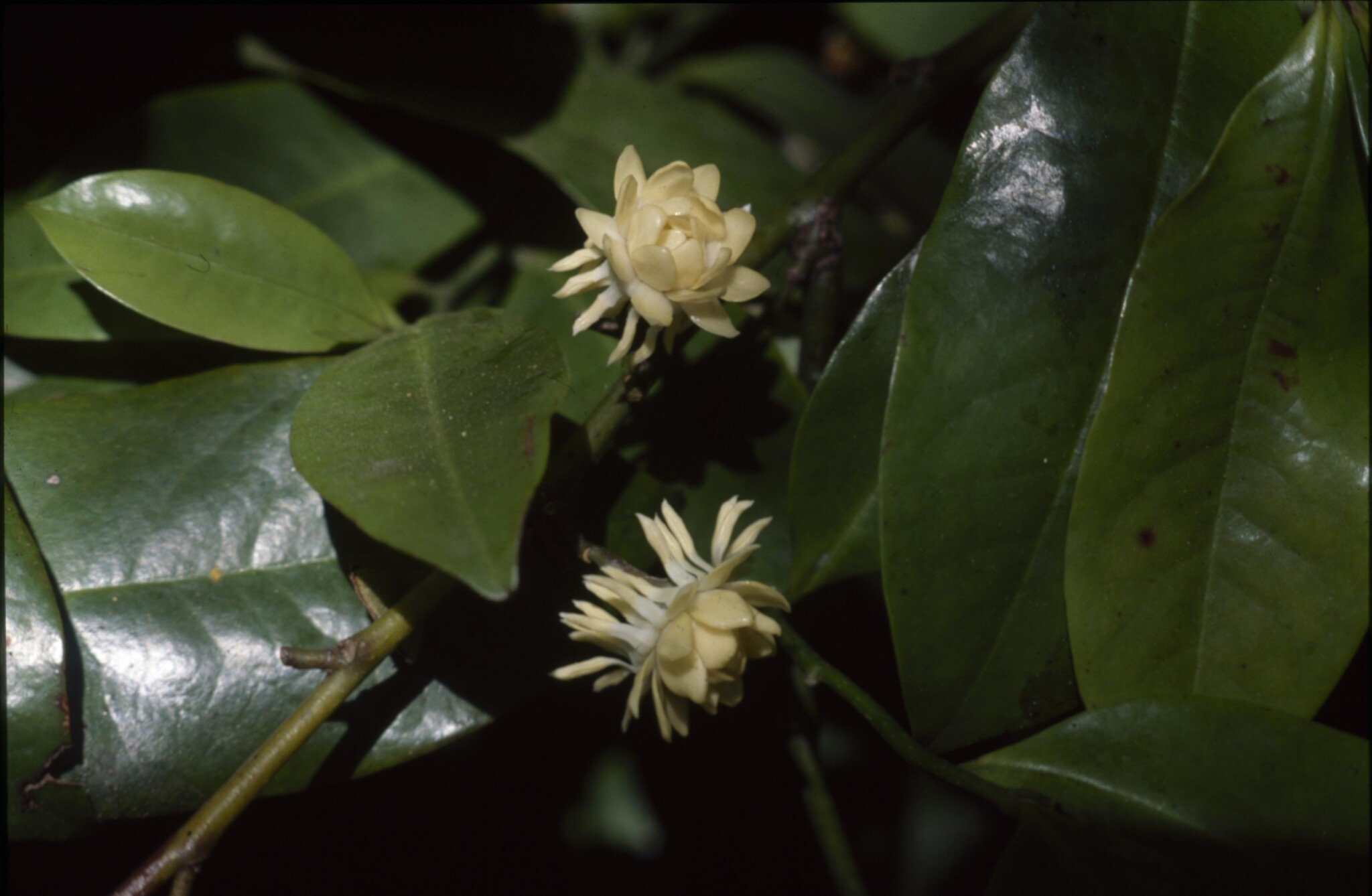
Tree to 10 m tall in the wild but generally somewhat shrubby, 1–2 m in cultivation. Leaves mostly 8–15 cm long, 3–5 cm wide, oblong to obovate, thick, glossy above, copper-coloured in winter and spring; tip pointed. Flowers approximately 2 cm wide, strongly scented; sepals and petals forming a cap; outer stamens to 12 mm long, the inner sterile, petal-like ones 2–3 mm wide and a food source for pollinating beetles; flower stalks to 7 mm long; late spring to early summer. Fruit to 2 cm wide with a stalk about 1 cm long.
Grows naturally mostly in rainforest but occasionally in open forest. The only other species in this southern family, e. bennettii f. Muell., is a rainforest tree from nsw, Qld and New Guinea that is not cultivated in the south.
n Guinea, Qld, nsw, Vic
Fruit fig-like, the pulp sweet and edible with a flavour resembling the guava.
Waxy, strongly scented flowers with a cap that is soon shed; carpels sunk in swollen base.
Source: (1997). Eupomatiaceae. In: . Horticultural Flora of South-eastern Australia. Volume 2. Flowering plants. Dicotyledons. Part 1. The identification of garden and cultivated plants. University of New South Wales Press.
Updated by: Rob Cross, December 2017
